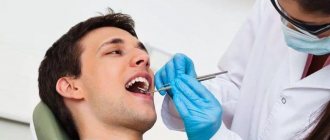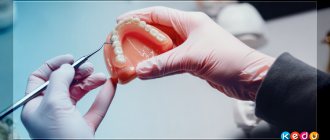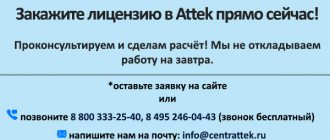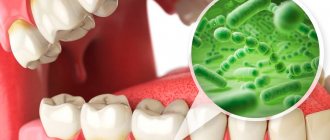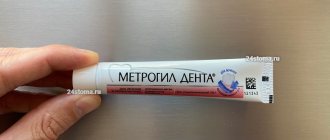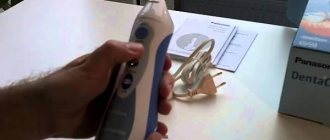| [organizational and legal form, name of organization, enterprise] | I approve [position, signature, full name of the manager or other official authorized to approve the job description] [day month Year] M.P. |
Job description of a dental hygienist [name of organization, enterprise, etc.]
This job description has been developed and approved in accordance with the provisions of the Labor Code of the Russian Federation and other regulations governing labor relations in the Russian Federation.
General provisions
1.1. A dental hygienist is a specialist.
1.2. A person with a secondary medical education in the specialty “Preventive Dentistry” is appointed to the position of dental hygienist.
1.3. A dental hygienist is appointed and dismissed by the chief physician (director) of the institution.
1.4. The dental hygienist must know:
— laws, government regulations and other regulatory legal acts that determine the development of healthcare and relate to the provision of dental care to the population;
— principles of medical examination of the population;
— principles of medical ethics and deontology;
— principles of organizing preventive dental care for children and adults;
— methods and means of preventing dental diseases;
— basics of epidemiology, etiology and pathogenesis, diagnosis and general principles of treatment of major dental diseases;
— indices for recording the intensity of caries and periodontal diseases, the hygienic state of the oral cavity;
— methods and means of individual and professional oral hygiene, features and organization of teaching oral hygiene to children in organized children's groups;
— methods of dental education of the population;
— safety regulations, industrial sanitation and fire protection;
- [fill in what you need].
1.5. During the absence of a dental hygienist (vacation, illness, etc.), his duties are performed by a person appointed in the prescribed manner.
1.6. [Enter as appropriate].
How is treatment done by a dental hygienist?
At the first stage, the dental hygienist conducts a survey of the patient and finds out complaints. Next is an examination of the oral cavity and a diagnosis.
Then the hygienist begins professional oral hygiene:
- Applies a special anesthetic gel to the gums so that all manipulations are painless.
- An ultrasonic scaler removes hard dental deposits: under the influence of ultrasonic waves, the structure of the stone is destroyed, and it is easily removed from the tooth.
- Sandblasting with Air Flow. Under high pressure, an abrasive mixture, water, and oxygen come out of the tip. This mixture removes soft plaque and pigmentation.
- Enamel polishing. After removing stones and plaque, the surface of the teeth remains rough, and new plaque and food debris will quickly join it. Therefore, the hygienist must carefully polish the enamel.
- Fluoridation. In some clinical situations it is necessary to coat the enamel with a gel that contains large amounts of fluoride. This gel serves to strengthen the enamel. Often used in children and adolescents.
Professional hygiene is absolutely painless and does not damage tooth enamel. As a result: the teeth are “freed” from stones and plaque, bleeding gums and bad breath go away.
Job responsibilities
Dental hygienist:
2.1. Diagnoses dental caries, periodontal diseases, non-carious lesions, diseases of the mucous membrane and registers the patient’s dental status.
2.2. Determines the hygienic condition of the oral cavity and teaches the patient how to brush teeth, conducts control brushing of teeth, and gives individual recommendations on the choice of hygiene products for children and adults.
2.3. Provides recommendations to patients on the care of orthodontic and orthopedic structures.
2.4. Carries out preventive and hygienic measures aimed at preserving the dental health of the population and developing skills in rational oral care.
2.5. Draws up and implements a program for individual prevention of dental diseases.
2.6. Performs preventive procedures: coating of teeth with fluoride varnish and fluorine gel, rinsing and application with remineralizing solutions, sealing of dental fissures, removal of supra- and subgingival dental plaque, periodontal applications.
2.7. Conducts prevention of major dental diseases in children of organized children's groups.
2.8. Provides dental education to the population of different age groups, medical personnel, preschool teachers, teachers, and parents.
2.9. Conducts surveys of the population on the prevention of dental diseases.
2.10. Designs oral hygiene corners in organized children's groups, prepares reminders and health bulletins.
2.11. Maintains accounting and reporting documentation.
2.12. [Enter as appropriate].
Job description of a dental hygienist
Compiled in _____ copies. I approve _______________________________ (surname, initials) _________________________________ _______________________________ (name of the employer, (manager or other person, _________________________________ _______________________________ his organizational and legal authority authorized to approve _________________________________ _______________________________ form, address, telephone number, job description address) _________________________________ email, OGRN, INN/KPP) " __"___________ ____ city "__"___________ ____ city N _______ M.P.
JOB DESCRIPTION for dental hygienist _________________________________________ (name of employer's department)
Developer: _________________
Agreed by: _________________
______________________________
Identifier of the electronic copy of the document.
PREAMBLE
This job description has been developed and approved in accordance with the provisions of the Labor Code of the Russian Federation and other regulations governing labor relations in the Russian Federation.
GENERAL PROVISIONS
1.1. A dental hygienist (hereinafter referred to as the “Employee”) refers to nursing staff.
1.2. This job description defines the functional responsibilities, rights, duties, responsibilities, working conditions, relationships (positional connections) of the Employee, criteria for assessing his business qualities and work results when performing work in his specialty and directly at the workplace in “_______________” (hereinafter referred to as “ Employer").
1.3. An employee is appointed to a position and dismissed from a position by order of the Employer in the manner prescribed by current labor legislation.
1.4. The employee reports directly to ____________________________. (job title)
1.5. The employee must know:
— laws and other regulatory legal acts of the Russian Federation in the field of healthcare related to the provision of dental care to the population;
— regulatory documents regulating the activities of healthcare institutions;
— the main symptoms of dental diseases and the principles of their treatment;
— medical preparations and dental materials;
— basics of health education;
— principles of medical examination of the population;
— medical ethics and deontology;
— organization of dental care for the population;
— principles of organizing preventive dental care for children and adults;
— methods and means of preventing dental diseases;
— etiology and pathogenesis, diagnosis and general principles of treatment of major dental diseases;
— fundamentals of pathology, microbiology, virology, immunology, epidemiology;
— indices for recording the intensity of caries and periodontal diseases, the hygienic state of the oral cavity;
— methods and means of individual and professional oral hygiene, methods of teaching oral hygiene to children in organized children's groups;
— human anatomy and physiology;
— psychology of professional communication;
— methods of dental education of the population;
— the basics of the functioning of budgetary insurance medicine and voluntary health insurance;
— basics of disaster medicine; basics of labor legislation;
— internal labor regulations established by the Employer;
— rules on labor protection, industrial sanitation and fire protection.
1.6. Qualification requirements. Secondary medical education in the specialty “Preventive Dentistry” and a specialist certificate in the specialty “Preventive Dentistry”.
FUNCTIONAL RESPONSIBILITIES OF AN EMPLOYEE
2.1. Diagnoses dental caries, periodontal diseases, non-carious lesions, diseases of the mucous membrane and registers the patient’s dental status.
2.2. Determines the hygienic condition of the oral cavity and teaches the patient how to brush teeth, conducts control brushing of teeth, and gives individual recommendations on the choice of hygiene products for children and adults.
2.3. Provides recommendations to patients on the care of orthodontic and orthopedic structures.
2.4. Carries out preventive and hygienic measures aimed at preserving the dental health of the population and developing skills in rational oral care.
2.5. Draws up and implements a program for individual prevention of dental diseases.
2.6. Performs preventive procedures: coating of teeth with fluoride varnish and fluorine gel, rinsing and application with remineralizing solutions, sealing of dental fissures, removal of supra- and subgingival dental plaque, periodontal applications.
2.7. Conducts prevention of major dental diseases in children of organized children's groups.
2.8. Provides dental education to the population of different age groups, medical personnel, preschool teachers, teachers, and parents.
2.9. Conducts surveys of the population on the prevention of dental diseases.
2.10. Designs oral hygiene corners in organized children's groups, prepares reminders and health bulletins.
2.11. Maintains accounting and reporting documentation.
2.12. Carries out measures to comply with the rules of asepsis and antisepsis, conditions for sterilization of instruments and materials, prevention of post-injection complications, serum hepatitis, HIV infection.
2.13. Provides first aid and emergency care to patients and victims for injuries, poisoning, allergic reactions, acute heart failure, fainting, shock, collapse.
EMPLOYEE RIGHTS
3.1. The employee has the right to:
— independent sanitary educational work among the population;
- providing him with work stipulated by the employment contract;
— a workplace that complies with state regulatory requirements for labor protection and the conditions provided for by the collective agreement;
— timely and full payment of wages in accordance with their qualifications, complexity of work, quantity and quality of work performed;
— rest provided by the establishment of normal working hours, reduced working hours for certain professions and categories of workers, the provision of weekly days off, non-working holidays, paid annual leave;
— complete reliable information about working conditions and labor protection requirements in the workplace;
— professional training, retraining and advanced training in the manner established by the Labor Code of the Russian Federation and other federal laws of the Russian Federation;
— association, including the right to create trade unions and join them to protect their labor rights, freedoms and legitimate interests;
— participation in the management of the organization in the forms provided for by the Labor Code of the Russian Federation, other federal laws of the Russian Federation and the collective agreement;
— conducting collective negotiations and concluding collective agreements and agreements through their representatives, as well as information on the implementation of the collective agreement and agreements;
— protection of one’s labor rights, freedoms and legitimate interests by all means not prohibited by law;
— resolution of individual and collective labor disputes, including the right to strike, in the manner established by the Labor Code of the Russian Federation, other federal laws of the Russian Federation;
- compensation for harm caused to him in connection with the performance of his job duties, and compensation for moral damage in the manner established by the Labor Code of the Russian Federation, other federal laws of the Russian Federation;
— compulsory social insurance in cases provided for by the federal laws of the Russian Federation;
— obtaining materials and documents related to their activities;
— interaction with other departments of the Employer to resolve operational issues of their professional activities.
EMPLOYEE RESPONSIBILITIES
4.1. The employee is obliged:
- conscientiously fulfill his labor duties assigned to him by the employment contract and this job description;
— comply with the internal labor regulations established by the Employer;
— maintain labor discipline;
— comply with labor standards established by the legislation of the Russian Federation;
— comply with labor protection and occupational safety requirements established by the legislation of the Russian Federation;
— take care of the property of the Employer (including the property of third parties held by the Employer, if the Employer is responsible for the safety of this property) and other employees;
— immediately inform the Employer or immediate supervisor about the occurrence of a situation that poses a threat to the life and health of people, the safety of the Employer’s property (including the property of third parties held by the Employer, if the Employer is responsible for the safety of this property).
EMPLOYEE RESPONSIBILITY
5.1. The employee is responsible for:
— failure to fulfill one’s duties in accordance with the employment contract and these instructions;
— inaccurate information about the status of the work;
— failure to comply with orders, instructions and instructions of the Employer;
— violation of safety regulations and labor protection instructions, failure to take measures to suppress identified violations of safety regulations, fire safety and other rules that pose a threat to the activities of the Employer and its employees;
— failure to comply with labor discipline.
WORKING CONDITIONS
6.1. The Employee’s work schedule is determined in accordance with the internal labor regulations established by the Employer.
6.2. Due to production needs, the Employee is required to go on business trips (including local ones).
6.3. Characteristics of working conditions in the workplace: _________________________.
6.4. ___________________________________________________________________ ___________________________________________________________________. (additional conditions that do not worsen the employee’s position in comparison with those established by labor legislation and other regulations containing labor law norms, collective agreements, legal agreements, local regulations) 7. RELATIONSHIPS (POSITION RELATIONS) OF THE EMPLOYEE 7.1. At work, the Employee interacts with ______________________________ __________________________________________________________________________. (divisions and employees from whom he receives and to whom he transfers materials, information, their composition and timing of transfer, with whom he interacts during the performance of work) 7.2. In emergency situations, the Employee interacts with _________________ ________________________________________________________________________________. (units that eliminate accidents and consequences of emergency incidents) 7.3. During the period of temporary absence of the Employee, his duties are assigned to ________________________________. (job title)
ASSESSMENT OF THE BUSINESS QUALITIES OF AN EMPLOYEE AND THE RESULTS OF HIS WORK
8.1. The criteria for assessing the Employee’s business qualities are:
— qualifications;
— work experience in the specialty;
— professional competence, expressed in the best quality of work performed;
— level of labor discipline;
— the ability to adapt to a new situation and apply new approaches to solving emerging problems;
- ability to work with documents;
— the ability to master new medications and technical means in a timely manner that increase labor productivity and quality of work;
— production ethics, communication style;
- ability to be creative, entrepreneurial;
— ability to adequate self-esteem;
- showing initiative in work;
— rationalization proposals;
— practical assistance to newly hired employees without securing mentoring with a corresponding order;
— high work culture at a particular workplace.
8.2. The results of the work and the timeliness of its completion are assessed according to the following criteria:
— results achieved by the Employee in performing the duties provided for in the job description and employment contract;
— quality of work performed;
— timely performance of job duties.
8.3.
Assessment of business qualities and work results is carried out on the basis of objective indicators, the motivated opinion of the immediate supervisor and colleagues. The job description was developed on the basis of _______________________ __________________________________________________________________________. (name, number and date of document) Head of structural unit ________________________/_________ (full name) (signature) “__”___________ ____ Approved by: legal service ________________________/_________ (full name) (signature) “__”___________ ____ have read the instructions: (or: received the instructions) ________________________/_________ (full name) (signature) “__”___________ ____
Requirements for a hygienist
The basic requirements for a hygienist are as follows:
- Higher medical education, valid certificate in “Preventive Dentistry” or “Dentistry”.
- Communication skills with parents of young patients.
- Knowledge of the latest techniques and oral care products.
In public clinics, the duties of a hygienist are performed by a dental therapist.
History of the profession
Traces of dental care are recorded by archaeologists during excavations with remains over 1.8 million years old. The first predecessors of toothbrushes appeared in India, and the first toothpaste recipes appeared in Greece around 1500 BC. A real toothbrush made from pig bristles was invented by the Chinese in the 15th century, and already in the 18th century the English company Addis began producing brushes. But until the beginning of the 19th century, oral hygiene was limited to removing tartar and was the prerogative of barbers, not doctors.
America can rightfully be considered the birthplace of oral hygiene. There, at the beginning of the 19th century, dentists formed the habit of entrusting preventive oral care activities to their assistants. In 1844, this was the reason for the birth of a “new” medical specialty: dental hygienist. The results of the work of hygienists made it possible to reduce caries among American residents by 65%. And in the future, Americans never relinquished the palm in matters of oral hygiene.
The modern toothpaste tube was invented by the American Colgate; 1937 is the date of the creation of nylon, which opened a new page in the development of toothbrushes: durable, elastic, moisture-resistant and antibacterial. At the end of the 30s of the last century, the first electric toothbrush was born in the USA, and in 1967, oral irrigators were invented there. All this forms the basis of periodontal care today.
In Russia, dental hygienists have been practicing since the beginning of the twentieth century, but then the profession was forgotten due to objective circumstances: a series of revolutions and wars. The first Soviet toothpaste dates back to 1950! And only since 2001, dental hygiene offices began to open in the country.
One of the first advertising posters for toothpaste invented in the USA.
